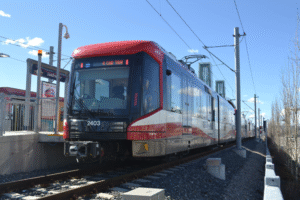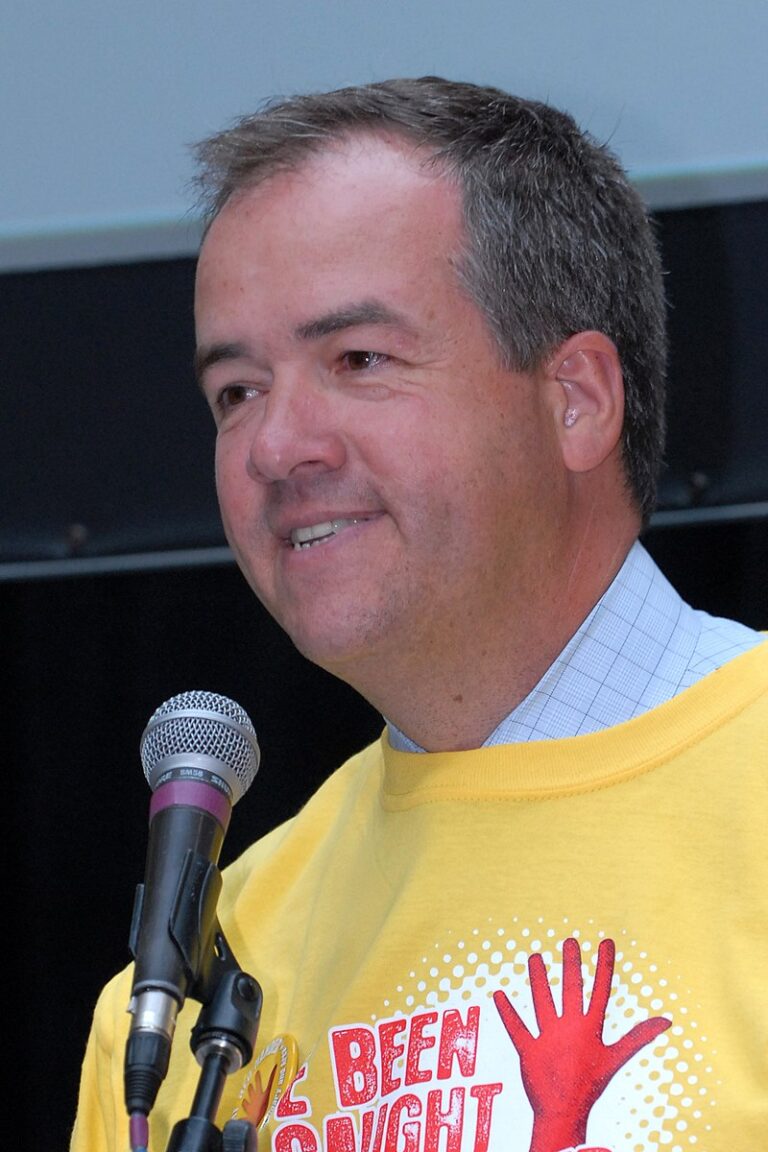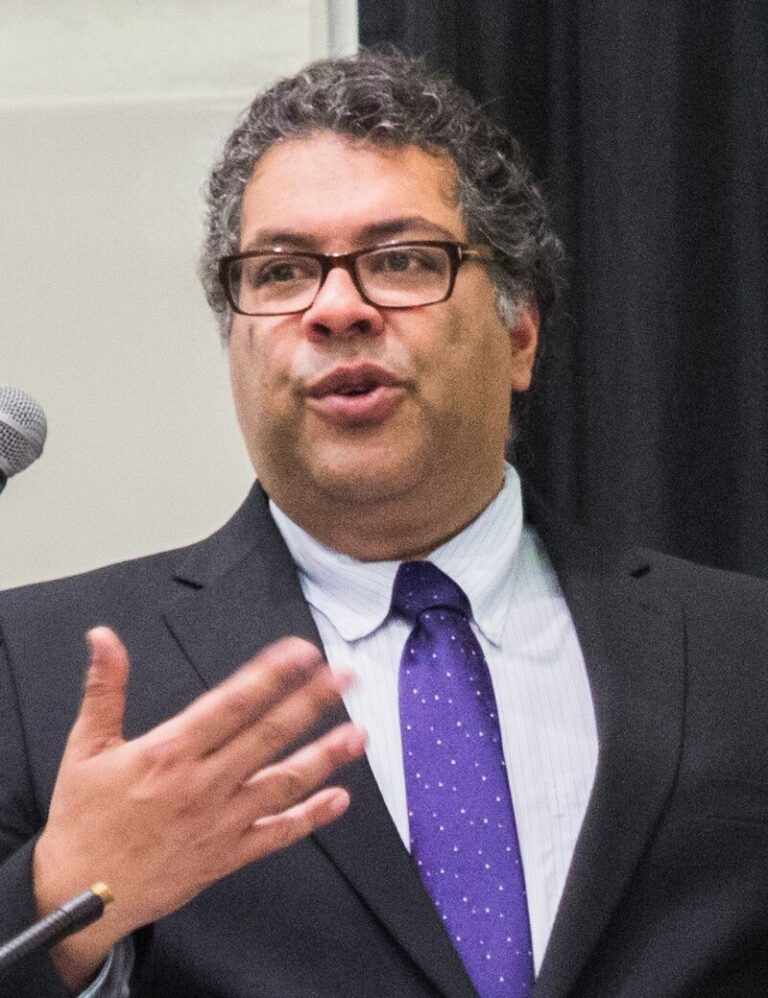From 2000 to 2025, Calgary’s leaders implemented several major policy initiatives aimed at managing growth, revitalizing the downtown core, and improving city governance. This analysis examines four key areas – the Plan It Calgary growth framework, downtown revitalization programs, the “make growth pay for itself” approach to developer levies, and the “cut red tape” initiative – to evaluate how effective these policies were in practice and whether their outcomes lived up to the ambitious goals and campaign rhetoric that accompanied them.
Plan It Calgary: Curbing Sprawl and Fostering Compact Growth
Calgary experienced rapid suburban expansion in the 1990s and 2000s, as seen on the city’s fringes. Plan It Calgary (adopted 2009) was a long-range blueprint to manage this growth by encouraging more compact, sustainable development within existing areas. Plan It Calgary was the City’s integrated Municipal Development Plan (MDP) and Calgary Transportation Plan, approved in 2009 after extensive public consultation. It envisioned a major shift in Calgary’s growth pattern: instead of continuously sprawling outward onto prairie land, 50% of future population growth would be accommodated within developed parts of the city (through infill and increased density) rather than greenfield suburbs. This was a bold departure from past trends – the city’s population had boomed between 2000 and 2010, and Calgary had largely “grown by spilling outward” into new suburbs, which incurred huge infrastructure costs. The Plan It strategy sought to create a denser, more transit-oriented and pedestrian-friendly city over a 60-year horizon. Notably, then-Mayor Dave Bronconnier acknowledged during the Plan It debates that Calgary “can’t continue” the old pattern of land-consuming sprawl because “we’ve been squandering land as a city… that’s far too expensive. To get Plan It approved, City Hall made some concessions (such as softening certain density targets) in response to developer resistance, but the plan laid out clear “Key Directions” to limit sprawl on paper and shift toward more sustainable growth.
In the 15+ years since Plan It’s adoption, progress toward its goals has been mixed. On one hand, the plan did establish a new policy framework that prioritized infill development and transit investment in principle. On the other hand, implementation depended on subsequent City Council decisions, developers, and consumer demand – as a Calgary Herald report presciently noted in 2009, “in the end, it’s just a plan. How it is implemented will be decided by city councils, developers, and consumers over the next 60 years.”. In practice, Calgary has struggled to meet the intensification targets set by Plan It. City administration admitted by 2020 that they did not expect to achieve the milestone of 33% of population growth in established (built-up) areas by 2039 (an interim target toward the long-run 50/50 growth split). The majority of growth was still occurring in peripheral new communities. Indeed, Council continued to approve new suburban developments at a rapid pace – for example, in 2018 the City green-lit 14 new suburban communities at once, and by the next year it was reported those new areas had contributed to a $56.9 million shortfall in infrastructure funding (for utilities, roads, and community services). This shortfall indicated that growth in those outskirts was still outpacing the financial contributions available to pay for it, underscoring the ongoing burden of sprawl. Moreover, city infrastructure investment has remained tilted toward road expansion over transit or active transportation. Between 2012 and 2017 – years when Plan It’s influence was supposed to take hold – Calgary added over 400 km of roads, but only 6.5 km of new cycle tracks downtown, and transit service actually stagnated (transit hours per capita in 2018 were roughly the same as in 2005). These trends suggest that despite the Plan’s vision of a more compact, transit-oriented city, actual budget choices and growth patterns have not fully realigned.
That said, Plan It Calgary did have important impacts. It entrenched the idea of “managed growth” into city policy and sparked an ongoing public conversation about the costs of sprawl versus benefits of density. Subsequent councils established mechanisms like the Growth Management Overlay (to phase new suburbs based on infrastructure costs) and began revisiting how to fund growth, in line with Plan It principles. The Plan’s influence can also be seen in projects like the Green Line LRT (a new crosstown light rail under development) and various neighborhood redevelopment plans aiming for mixed-use, higher density communities. In essence, Plan It shifted the trajectory – but not as dramatically as hoped. The long-term outcome versus the initial campaign rhetoric (which promised to “end the sprawl subsidy” and create a sustainable city) has been only partially realized. Calgary has not curbed suburban expansion to the extent envisioned, and key metrics (intensification rate, transit usage) have lagged the targets. Plan It’s legacy thus remains a work in progress: it successfully set a new policy direction and modestly slowed the pace of sprawl, but economic and political pressures resulted in compromises that left many original goals unmet by 2025. Future city councils are continuing to adjust the plan (through the “Next 20” MDP review and a new Calgary Plan) to address these shortfalls and re-commit to balanced growth.
Downtown Revitalization: From East Village Renewal to the Downtown Recovery Plan
Calgary’s downtown saw significant policy focus from 2000–2025, first through proactive redevelopment initiatives during boom years, and later through urgent revitalization efforts in response to economic downturns. The outcomes have been mixed – with notable successes in specific districts like East Village, but ongoing challenges in the broader core.
East Village Revitalization: One of Calgary’s hallmark downtown projects has been the transformation of the East Village, a once-neglected eastern downtown district, into a vibrant mixed-use community. The master-planned East Village revitalization was launched in the mid-2000s (under Mayor Bronconnier) and carried forward by the Calgary Municipal Land Corporation (CMLC), a city-owned development agency. At the start of the 2000s, East Village was effectively a derelict “wasteland” of vacant lots and dilapidated buildings behind City Hall. Through the late 2000s and 2010s, the City invested heavily in infrastructure and placemaking here – raising the floodplain, building the RiverWalk along the Bow River, rehabilitating heritage structures, and constructing flagship public facilities. A Community Revitalization Levy (CRL) – Canada’s first use of a tax-increment financing mechanism – was used to fund amenities like the new Central Library (opened 2018) and the Studio Bell National Music Centre. These catalytic projects successfully attracted private developers to build new condos, retail and restaurants. By around 2021, East Village’s makeover was roughly halfway complete: seven new residential towers had been built offering 1,500+ new homes and attracting about 2,500 new residents, along with two new hotels and over 35 new retail/business spaces. (The ultimate master plan calls for ~3,500 housing units and ~11,500 residents at full build-out.) The neighborhood now boasts popular public spaces and amenities – for example, the restored Simmons Building (a historic bakery-warehouse turned food hall), St. Patrick’s Island park, and regular community events – making East Village a lively destination for both locals and tourists. Crucially, what was once a “forgotten” skid-row area is today touted as “one of the brightest revitalization achievements in Canada,” demonstrating how targeted public investment can spur urban renewal. By 2019, residents and business owners in East Village spoke of a palpable vibrancy and a sense that the area had finally turned the corner after decades of false starts. In sum, the East Village program has largely delivered on its goals – it revitalized a blighted district into a growing, mixed-use community, fulfilling campaign promises to breathe new life into Calgary’s downtown East End.
“Make Growth Pay for Itself”: Developer Levies and the Cost of Suburban Growth
A recurring campaign theme in Calgary municipal politics has been “making growth pay for itself.” This refers to ensuring that the costs of new suburban development – roads, water supply, sewers, fire halls, etc. – are paid by developers (and new home buyers) rather than being subsidized by existing taxpayers. Over 2000–2025, Calgary took several steps to align with this principle, raising developer levies and reducing the hidden subsidies for sprawl. However, the effectiveness of these measures has been debated, and tensions between City Hall and developers persisted as each side sparred over what constitutes a “fair share” for growth costs.
Early 2000s status quo: For many years, Calgary (like most cities) directly or indirectly subsidized new suburban growth. For example, the City historically covered 50% of the capital costs for certain infrastructure in new communities – such as water and sewer mains – effectively a “sprawl subsidy.” Developers only paid the other half through off-site levies, leaving general taxpayers to pick up the rest. This approach kept new suburban homes cheaper but strained city finances as Calgary expanded rapidly. By the late 2000s, growth pressures were immense (Calgary’s population grew ~25% in 2001–2006 alone) and the City had to borrow heavily for new infrastructure. Around $1.3 billion in water and sewer infrastructure debt was incurred to serve expanding fringe neighborhoods, and those bills were coming due. The prevailing system was increasingly viewed as unsustainable and inequitable – prompting political promises to “make growth pay for itself” by charging developers more.
Reforms under Mayor Nenshi: After his 2010 election, Mayor Naheed Nenshi made overhauling off-site levies a priority, framing it as ending the subsidy that existing residents provide to new suburbs. In 2016, following extensive negotiations, Calgary City Council unanimously approved a new off-site levy bylaw that substantially increased the fees charged to developers for new greenfield development. In particular, the City eliminated the 50% city-funded “sprawl subsidy” for water and sewer infrastructure – requiring developers to cover 100% of those costs in new communities going forward. This was a landmark policy shift. The higher levies were phased in starting February 2016 and reached full implementation by 2018. The rationale was simple: the true cost of providing infrastructure in far-flung areas needed to be reflected in the price of new homes, rather than hidden in everyone’s property taxes. Nenshi was vocal in arguing that “the cost to growth” had to be accounted for, and even developers began to publicly acknowledge that “there is a cost to growth and we need to be responsible about it.” Todd Litman of the Victoria Transport Policy Institute and other urban experts praised Calgary’s new fee structure as a model for growth paying for growth. The increased levies (covering not just water/sewer but also roads, transit facilities, parks, etc. under provincial law) were expected to add tens of thousands of dollars to the cost of each new suburban house – a cost ultimately passed to homebuyers, but intended to ensure new residents paid for the infrastructure they required.
These policy changes did move Calgary closer to the “make growth pay for itself” ideal. The city projected that over the coming decades, the new levy regime would generate billions to fund new infrastructure, reducing the burden on existing taxpayers. By removing the water/sewer subsidy in 2016, Council saved the City from covering an estimated $ Utilities shortfall that would have grown with each new subdivision. However, the fight over who pays for growth did not end there. Developers initially pushed back hard – there were warnings that higher levies would “price out” new home buyers or drive development to neighboring municipalities. Over time, most developers adapted to the new rules, but the development industry continued to lobby for lower costs. Notably, in 2018, Council – under pressure to stimulate the economy – approved 14 new fringe communities in one swoop. This politically driven decision undermined the carefully phased approach to growth and, as noted earlier, left the City facing a $56.9 million funding shortfall for infrastructure in those areas by 2019. In other words, the levies and budget set aside were insufficient for the accelerated growth that Council permitted, showing that policy alone can be overridden by growth pressures if political will shifts.
By the early 2020s, the conversation evolved to include operating costs as well. Even with developers now paying more for capital infrastructure, new neighborhoods still require ongoing services (fire, police, road maintenance, transit) that cost the City money every year. In 2020, City administrators suggested that perhaps developers should also cover some initial operating costs for new communities so that existing Calgarians don’t see those costs on their tax bills. This idea – essentially escrow or fee for service in early years – highlights that “making growth pay for itself” is multifaceted and not entirely achieved yet. Indeed, as of 2024 the debate reignited: Calgary’s Council was considering further increases to off-site levies to ensure new suburbs pay fully for amenities like recreation centres and roads, while the suburban developers’ association (BILD Calgary) fought back against what they saw as excessive fees. BILD argued that high levies hurt housing affordability and insisted they were willing to pay a “fair share” but not an overcharge. Council, on the other hand, cited evidence that insufficient levies simply translate to tax hikes or service shortfalls for everyone. This tug-of-war came to a head in January 2024 when Council voted on a levy update (with developers lobbying intensely to delay or reduce it).
Outcome vs. Rhetoric: The push to “make growth pay for itself” did yield concrete policy change – Calgary in 2025 is markedly different from 2000 in how it funds new development. Developers now finance a much larger portion of infrastructure costs than they did two decades ago, thanks to the reformed levies. The campaign promise to end the hidden sprawl subsidy was largely kept in the capital budget sense. However, whether growth truly “pays for itself” remains a matter of perspective. Critics note that existing residents still indirectly subsidize new areas through ongoing operating costs and provincial infrastructure that isn’t covered by city levies. Additionally, political decisions sometimes backslide on the principle (as seen in the 2018 community approvals). Overall, though, Calgary has moved closer to matching policy with rhetoric here: the era of unabated sprawl on the city’s dime has given way to an era of “growth paying for growth”, even if not perfectly. Future councils will likely continue fine-tuning this balance, as the pressures of housing affordability and fiscal sustainability pull in opposite directions.
“Cutting Red Tape”: Streamlining City Hall – Success or Symbolism?
Upon taking office in 2010, Mayor Nenshi launched the “Cut Red Tape” initiative, a campaign promise aimed at reducing bureaucracy and improving city services. This initiative is a telling example of policy outcome versus campaign rhetoric – it produced some measurable improvements and feel-good wins, but also drew skepticism over its overall impact.
The Cut Red Tape program set out to identify and eliminate unnecessary regulations, speed up approvals, and make City Hall more business-friendly. Over 2011–2013, the City ran three phases of the initiative, soliciting ideas from City staff and the public on how to streamline everything from permit processes to pet licensing. By 2013, the City reported tangible results: the Cut Red Tape changes were estimated to have saved Calgarians 33,000 hours of time and about $1.12 million in productivity (time value) by eliminating redundancies and simplifying procedures. For example, improvements were made to permit turnaround times and some forms were consolidated or put online, making interactions with the City more efficient for residents and businesses. City Hall was proud enough of this effort to celebrate an annual “Red Tape Reduction Week” highlighting success stories. One oft-cited achievement was the launch of Calgary’s food truck industry – prior to 2011, food trucks faced so many regulatory hurdles that they were nearly non-existent; the Cut Red Tape task force helped relax street vending rules and created a pilot project, leading to food trucks becoming a popular fixture in Calgary. This was emblematic of the initiative’s spirit: taking a fresh look at old rules and asking if they still made sense.
However, when assessing the long-term impact, many observers view Cut Red Tape as modest in scope. The quantified savings ($1.12 million) were relatively small in the context of a billion-dollar city budget. After the initial burst of activity, the initiative wound down and did not fundamentally transform the bureaucracy. By the late 2010s, businesses were still complaining about red tape at City Hall in areas like development approvals – suggesting that deeper regulatory reforms remained needed. In political circles, critics of Nenshi sometimes dismissed Cut Red Tape as a gimmick, joking that the most tangible thing the mayor delivered was trendy food trucks. As one commentator noted, a “conservative former city councillor” quipped a few years into Nenshi’s tenure “what has Nenshi given the city except food trucks (an innovation of his ‘cut red tape’ efforts)?”. This barbed comment underscored the view that many of the initiative’s achievements were feel-good or “skewed toward the abstract” – easier access to services, a culture of innovation – rather than big concrete changes. Nenshi’s supporters countered that those abstract improvements (like a more customer-service-oriented mindset at City Hall) were in fact important for a rapidly growing city. Both perspectives have merit.
In sum, the “Cut Red Tape” initiative did fulfill its immediate promise: it cut or streamlined dozens of small regulations, saved time and money for citizens, and symbolically showed the City could change its ways. It also arguably improved Calgary’s quality of life in little ways – from easier business licensing to enabling new urban amenities (food trucks, pop-up patios, etc.). These outcomes align with the campaign rhetoric of making government more efficient and responsive. Yet, the long-term legacy is limited. No permanent “red tape reduction office” exists today, and many bureaucratic processes are as complex as ever (a fact acknowledged by subsequent councils). The initiative’s peak impact was during Nenshi’s first term; afterward it blended into the routine of continuous improvement at City Hall. Importantly, it did not significantly reduce the size or cost of government (property taxes actually rose throughout Nenshi’s tenure to fund expanded services). So, while Cut Red Tape was not merely empty rhetoric – it produced real though modest gains – it also did not transform city governance to the degree an optimistic voter in 2010 might have imagined. It stands as a case where a campaign promise was kept in principle and provided some public benefit, but its ultimate impact was incremental. As Calgary moves forward, the ethos of cutting red tape lives on in periodic efficiency drives, but the substantial challenges (e.g. speeding up large-scale planning approvals or cutting business taxes) remain works in progress beyond the scope of the original initiative.
Conclusion: Across these four policy areas, Calgary’s experience from 2000 to 2025 illustrates the often wide gap between ambitious promises and practical outcomes. Plan It Calgary set a visionary course for sustainable growth, and while it institutionalized the concept of curbing sprawl, it fell short of many targets as economic and political realities intervened. The downtown revitalization efforts show both shining successes (East Village) and the daunting task of reinvigorating a modern city’s core in the face of external shocks – a reminder that urban renewal is an ongoing journey. The drive to “make growth pay for itself” did change the financial equation of development in Calgary, achieving much of what was promised, though not without continued friction and adjustments. Finally, the “cut red tape” crusade delivered a cultural shift and minor victories rather than a bureaucratic revolution, highlighting that governance improvements are often incremental. In all cases, the value of these initiatives can be seen in the lessons learned and the partial progress made. Calgary in 2025 is grappling with the outcomes – both positive and negative – of decisions taken over the last two decades, as it continues to refine policies to meet the city’s growth and livability goals. The long-term impacts thus offer a nuanced insight: policy initiatives and campaign promises can indeed drive change, but sustaining that change and fully realizing the vision often requires persistent effort, adaptation, and political will well beyond the initial splash of a new idea.








